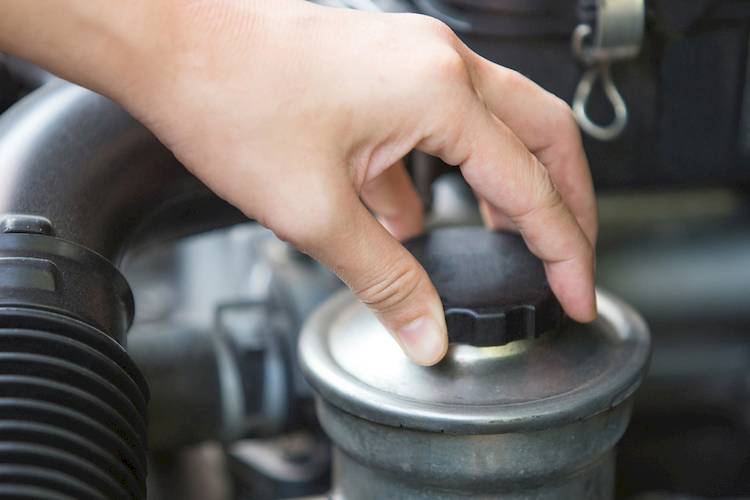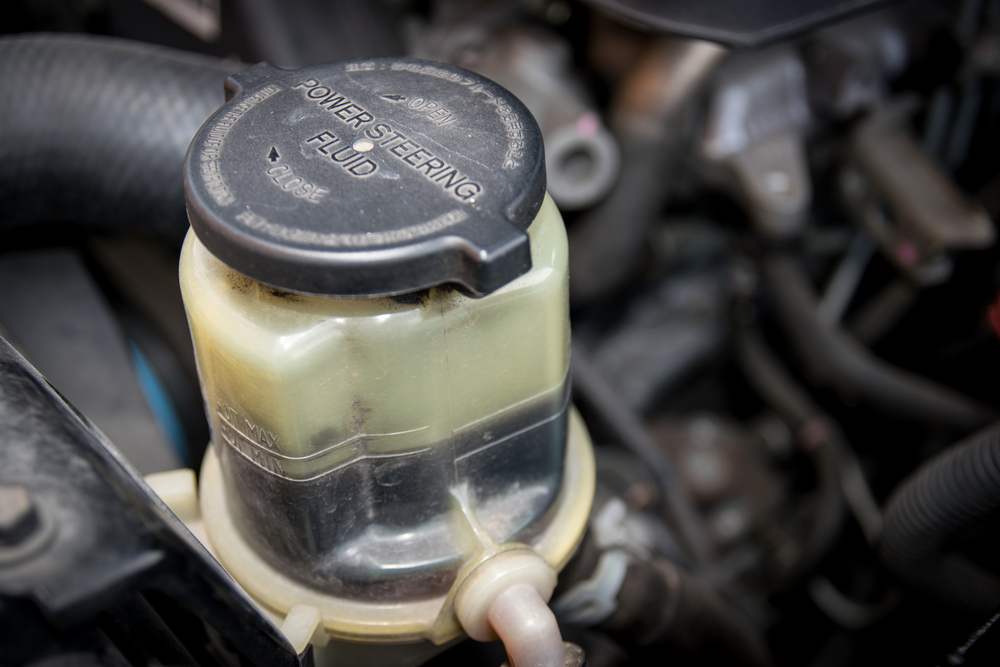
In addition it has a distinct smell kind of like burnt marshmallow. Also make sure you do it with the engine off to get a better reading of what fluid is in there already.

Power steering is a hydraulic system meaning it uses the power of a force pushing on a liquid in order to create motion.
Too much power steering fluid symptoms. What Happens If You Overfill Power Steering Fluid. When you first put too much power steering fluid in you will very likely not notice much of a problem. The excess power steering fluid will sit in the reservoir and it may or may not be a problem for the car owner.
As a car heats up the power steering fluid will heat up and it will expand. One of the main symptoms your fluid reservoir is going bad is your vehicle is leaking power steering fluid. This fluid may be seen on the ground beneath your vehicle.
It is clear in color to an amber color. In addition it has a distinct smell kind of like burnt marshmallow. Power steering fluid is flammable so if you do have a leak contact a professional mechanic to have your power steering fluid.
Overfilling could also cause the system pressure to back up potentially blowing seals in the rack. Modern power steering systems generally have some kind of provision to vent excess pressure and the pump contains a check valve to keep the reservoir from excessively pressurizing. If the unit is overfilled remove excess fluid dropping the level to the maximum mark to prevent further foaming.
If the power steering unit continues to lose fluid it probably has a leak. Drivers may notice an oily spot on the driveway under the car when there is a leak. But keep in mind that power steering fluid expands as it is heated.
This can cause an overfilled reservoir to overflow and make a mess of your engine bay. It could get on your belts cause them to slip and potentially destroy them prematurely. A whining or squealing noise when the wheels turn can be an indication that the power steering fluid is low.
Power steering fluid is available for sale at automotive supply stores and can easily be replaced however a drop in the amount of fluid may be indicative of a leak in the power steering rack. The only problem with overfilling the power steering fluid reservoir is that when the fluid heats up the excess fluid will overflow out of the vent hole and make a mess whereever it ends up. July 5 2016 728pm 3.
Theres a simple solution. So if the reservoir was filled to the brim the equivalent amount of fluid between the cold and hot lines would have been expelled. If the reservoir is near the belt or power steering pully the fluid may have gotten on the belt causing it to slip.
If this has happened clean the pulleys engine not running and clean or replace the belt. Take out the excess with a straw I have dont it before. Insert the straw into the fluid block the air entering at the top.
Also make sure you do it with the engine off to get a better reading of what fluid is in there already. Before discussing the reasons and solution for power steering fluid leaks first it is essential to know that our power steering fluid is getting leaked. To know that below we have listed some of the symptoms have a look.
Symptoms of Power Steering Fluid leakage. In case your power steering is making any kind of noise. The vast majority of cars use hydraulic oil for power steering systems.
It is extremely important that the steering fluid is at the right level. Too much or too little fluid can make the fluid leak or cause the steering to malfunction. There are a few symptoms of a leak in the brake fluid of which you should be mindful.
Other symptoms include foaming of the fluid and erratic actuator movement. Aeration accelerates degradation of the fluid and causes damage to system components through loss of lubrication overheating and burning of seals. A few symptoms of power steering problems are.
Puddles drips or stains on the driveway. Squealing sounds when turning the wheel. Difficult steering or erratic behavior.
The vehicle is difficult to control. Some of the most common power steering problems you may face involve issues with hoses slippage on your coupling a slipping drive belt or a power steering fluid leak. Power steering fluid leaks are usually caused by a cracked or worn-out hose that feeds the power steering pump.
Also give the hose clamps and other connections a careful inspection. If the hoses and clamps check out OK move on to the power steering pump. The entire power steering rack should also receive your attention.
This excessive power draw can cause the compressors drive belt to slip and screech which generally precedes a loud snap and belt failure. Or the belt may hang on and sap power from the engine. In this case you may end up with a low or fluctuating idle sluggish acceleration and excessive loss of fuel economy when the AC is running.
Power steering is a hydraulic system meaning it uses the power of a force pushing on a liquid in order to create motion. These types of systems are capable of exerting extremely high amounts of force with little energy input making it an effective way to control your car. Power steering can withstand.
If your power steering is noisy screeching squealing or if your power steering is weak or jumpy you may simply need to add some power steering fluid. A fluid level too low b viscosity too high temperature too low 2. Fluid contaminated and dirty leading to damage and blockage of equipment 3.
Wear of running surfaces 2. As 3 A 7 B Insufficient Power and Torque at the Power Take-offs pressure too low 1. Pressure losses excessive 2.
What Happens When You Air Gets in Your Power Steering Fluid - YouTube. 9 Mar 31 2015. Symptoms of a failing PS pump include low power assist like the OP described.
Especially at low rpm. Andor buzzing noise from the pump vanes that are proportional to engine rpm. Fudman since it sort of failed in its winter sleep you may want to try the bleed procedure.